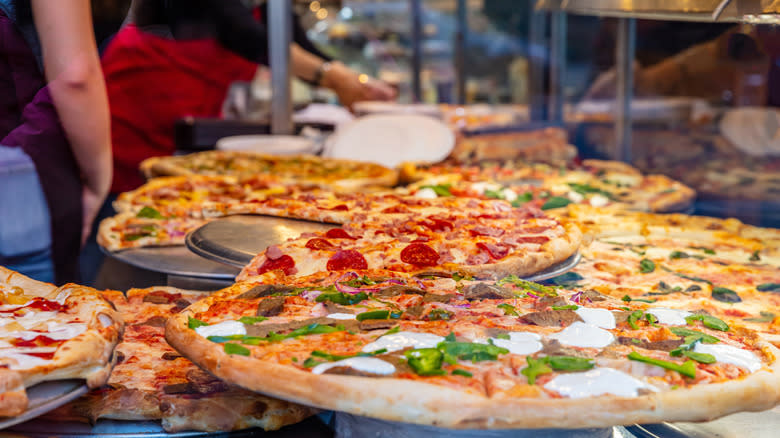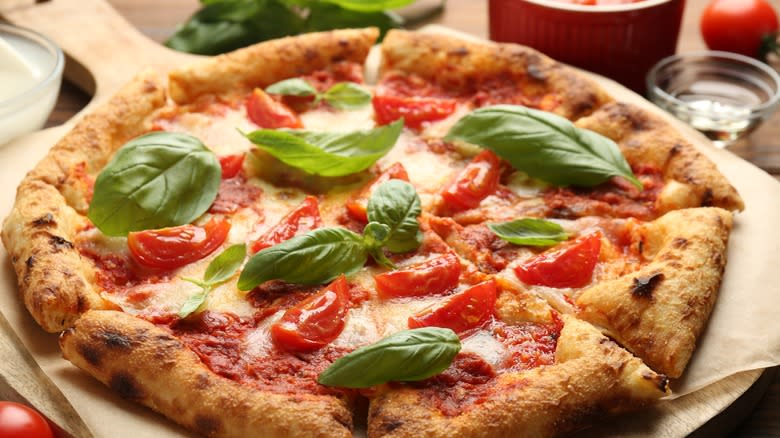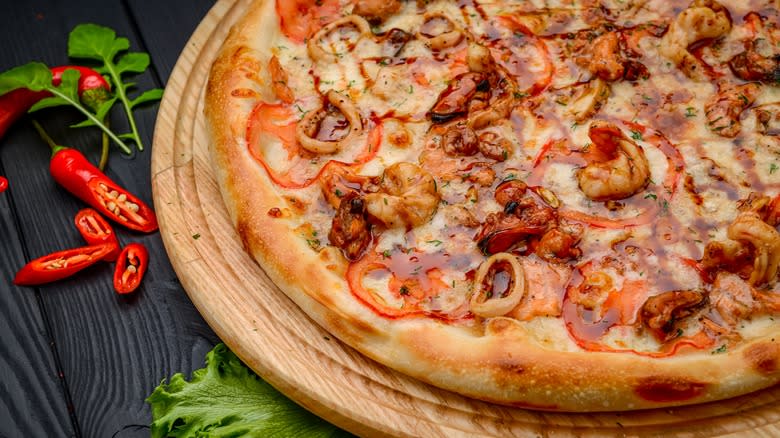A Pizza Chef's Tip For The Perfect Sauce-To-Topping Ratio

Making pizza is a delicate craft of balancing all the right ingredients. Too much sauce and your slice is soggy, too many toppings and everything slides off the dough onto your plate. Creating the perfect sauce-to-topping ratio is key, whether you're making pizza at home or in a five-star restaurant, and Chef Melissa Rodriguez certainly knows how to achieve this feat.
Melissa runs Mel's Wood-Fired Pizzeria in New York City, and shared her insights with Daily Meal in an exclusive interview, noting that "it's all about balance in amount as well as flavor profile." Different combinations of sauces and toppings work better than others when considering the makeup of the ingredients and the weight of the sauce. You also want to make sure the flavors line up so the palate is balanced. Knowing your ingredients is the key to finding the right sauce-to-topping ratio, and from there, portioning everything properly.
Read more: The 101 Best Pizzas In America
Getting To Know Your Ingredients

Certain flavor combinations in the pizza world are classic: fresh mozzarella and basil or prosciutto and arugula, for example. These work because the denser flavors are matched with a light bite that provides the perfect mouthful. Of course, the toppings must be supported by the right sauce, hence the classic tomato sauce on a margherita pizza, which amplifies the basil yet isn't too heavy for the cheese. Imagine a margherita pizza with a thick white sauce — it would taste out of place and overwhelmingly creamy.
Chef Rodriguez is a pro at building her pizzas with just the right amount of toppings, because she knows her ingredients well. "If I'm using a thicker, heartier sauce I try to lighten up the ingredients so the pizza doesn't feel super heavy when you eat it," she says. Not only does this apply to the flavor, but to the physical construction of the pizza too.
On the other end of the spectrum, Rodriguez notes that if she has a "lighter, thinner, and zestier sauce," she can use more substantial toppings. This is why you see meat-heavy pizzas paired with lighter cheeses like shredded mozzarella or goat cheese, instead of creamier choices like brie or bolder options like cheddar, that tend to weigh everything down.
Making The Most Of A Make-Your-Own Pizza

Most people have tried their hand at choosing the components of their pizza, often yielding a mishmash of strange flavors and soggy dough. To make the most of these make-your-own experiences, whether at home or at a pizzeria, try relying on standby recipes that already work, like shrimp scampi. Rodriguez does this with a shrimp scampi pie, which has a thick parmesan sauce base and incorporates shrimp marinated in a chili and lemon sauce. To create the best ratio of toppings she explains, "the shrimp are cut into pieces that are substantial enough to eat and cook nicely," adding, "But those pieces are also small enough that they can be part of a complete bite." This fresh take on a classic dish allows for tried-and-true flavors to make their way onto your pizza in optimal proportions.
Other classic combinations to try are ham and pineapple —and yes, you can and should smoke your pineapple before using it as a topping. Although Hawaiian pizza is controversial and has nothing to do with Hawaii, it boasts a balanced flavor profile. The sweet and light tomato sauce matches the sugars in the pineapple and is contrasted by the salty ham which adds some bulk. When making pizza at home, you can also experiment with the amount of toppings you add. Placing a smaller amount of assorted ingredients gives you the variety you desire without overwhelming the constitution of your slice.
Read the original article on The Daily Meal.

 Yahoo Lifestyle
Yahoo Lifestyle 
